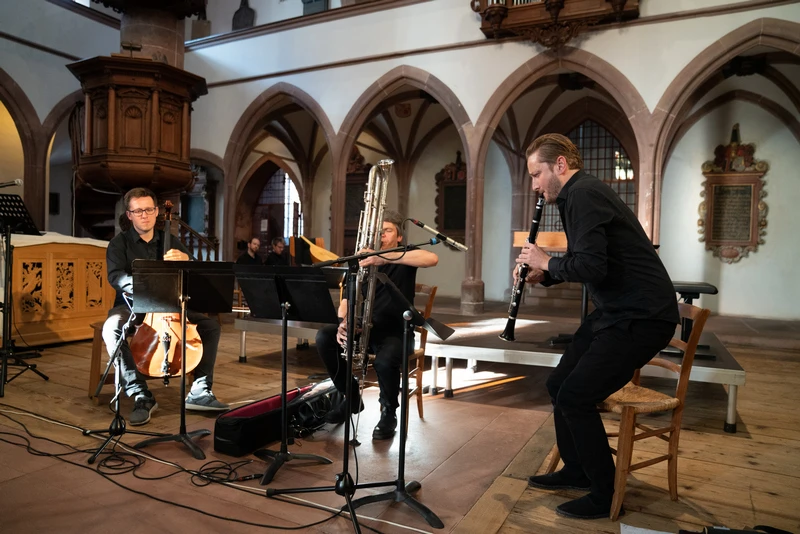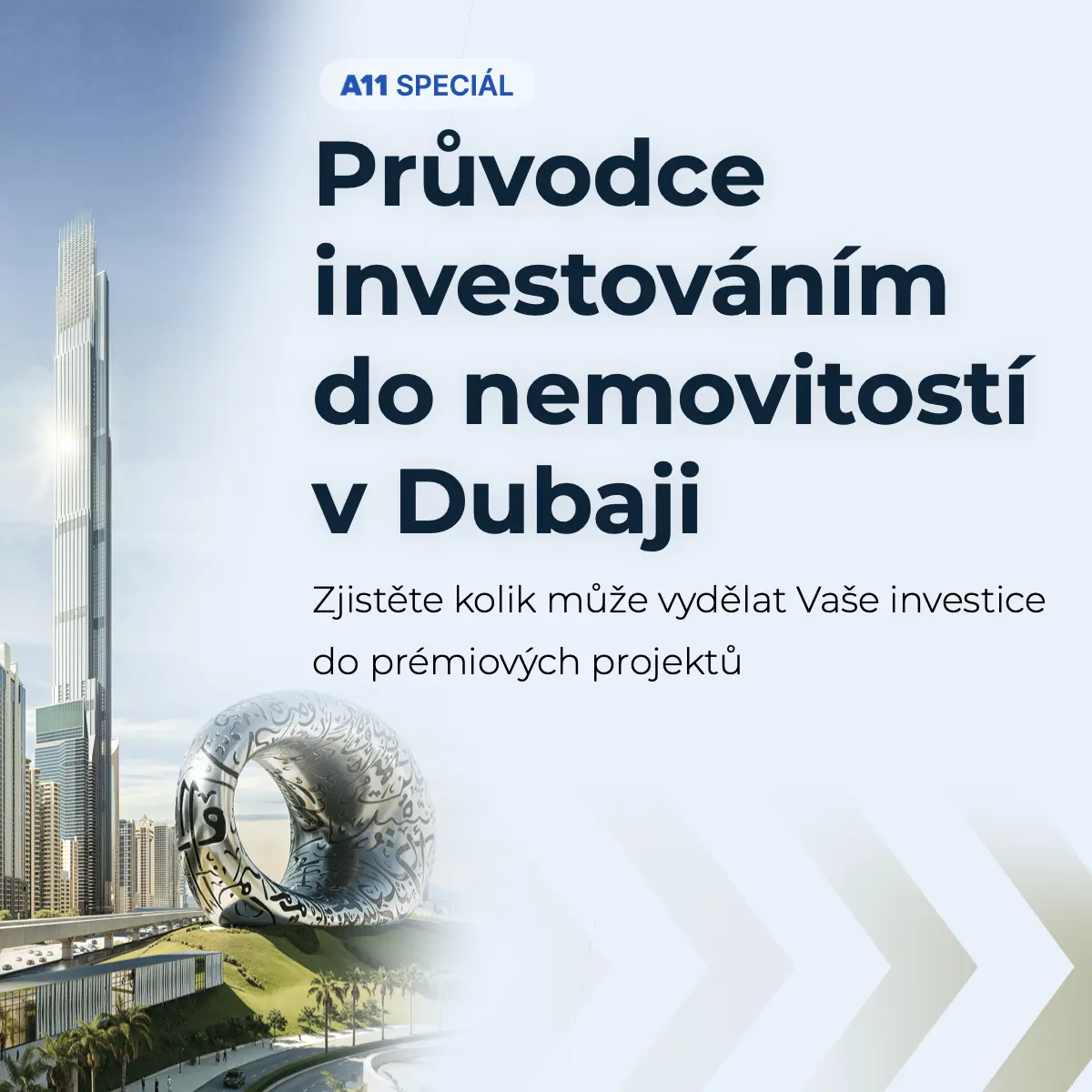Předchozích devět dílů seriálu, v nichž mohli čtenáři Harmonie prostřednictvím textů předních evropských hudebních historiků a jejich doktorandů nahlédnout do zákoutí středověké a raně novověké kultury, bylo jedním z výstupů široce rozvětveného projektu Sound Memories: The Musical Past in Late-Medieval and Early-Modern Europe (Zvuková paměť: Hudební minulost v pozdně středověké a raně novověké Evropě). Ten je podpořen evropskou organizací HERA (Humanities in the European Research Area), jež od roku 2006 rozděluje prostředky na výzkum v humanitních vědách. „Humanities matter“, zní heslo této organizace – čili „na humanitních vědách záleží“. Věta, kterou je záhodno opakovat a zdůrazňovat zas a znovu.
[block background=“#e5e5e5″]For English version of the article please see below.[/block]
Zdá se, že v době reálně hrozící klimatické katastrofy, ekonomické či sociální krize, v době politické mizérie, není nic zbytečnějšího než zkoumat středověké rukopisy a pídit se po důvodu, který vedl jejich autory k zařazení té či oné skladby. Vždyť žijeme ve století jedenadvacátém, jsme lidé používající výdobytky civilizace a éra loučí, pergamenů a příšeří klášterních cel je minulostí. Stačí ale málo, aby se ukázalo, jak moc pro nás minulost znamená a co vlastně tvoří podstatu naší identity.
Když hoří katedrála
Dne 15. dubna 2019 vypukl požár v pařížské katedrále Notre-Dame. Obraz ikonické gotické stavby v plamenech, vyvolávající až fyzickou bolest, a pocit, že se stalo cosi šokujícího až fatálního, zasáhl doslova celý svět. Velká většina lidí si uvědomila – aniž by to třeba reflektovala nebo formulovala – že nejde jen o destrukci jisté, byť významné architektonické památky. V katedrále Notre Dame – a teď se prosím neuchyluji k ezoterii a nemluvím o energiích, které zde zanechaly generace věřících, ani o tajuplných zednářských mystériích – byla uchována podstata něčeho, co je bytostně vepsáno do naší DNA. „Nesnáším pohled na hořící katedrály. Protože mně ztělesňují Evropu. Za nimi následují galerie a až pak všechno další včetně přírody. Jsme muzeálním, lidmi po staletí obdělávaným kontinentem. Dnes jeho podstatný kus v Paříži zmizel, což se dá vyložit a pochopit různě. I jako výzva k novému počátku, který – to nejde nikdy vyloučit, může přinést něco lepšího než to, co bylo.“ Těmito slovy reagoval na událost spisovatel Pavel Kosatík.
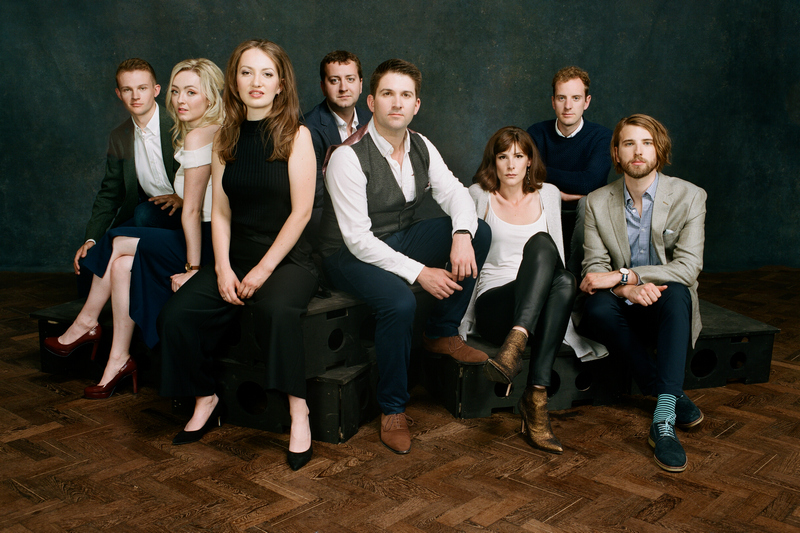 Katedrála není jen dovedně opracovaný a umně vztyčený kámen: je to živý organismus a hudba je tím, co jej do velké míry spoluvytváří. A teď se oklikou dostávám k zamýšlenému tématu: v listopadové Harmonii (2018) jsme mohli číst skvělý článek Adama Mathiase z Cambridge, který se věnuje právě hudbě v katedrále Notre-Dame v době jejího rozkvětu ve 13. století, kdy se stala spolu s pařížskou univerzitou magnetem pro všechny lačné poznání. Na příkladech dvou rukopisů Mathias vysvětluje, jak se tehdy lidé vztahovali ke své minulosti. „V Paříži se významně posunul vztah k historii. V této jedinečné kulturní konfiguraci sehrál způsob vnímání minulosti zásadní roli nejen co se týče proměny způsobu, jak uchovávat hudební repertoár, ale ovlivnil i estetické hodnoty, které stály v pozadí vzniku nové hudby. Nový pohled na historii podnítil šíření hudební praxe daleko za hranice Paříže, podněcoval nové způsoby psaní hudby a historické povědomí o hudebních stylech zcela jinak než v předchozích stoletích.“ Jinými slovy, minulost ovlivnila estetická kritéria pro komponování hudby budoucnosti a prostředí pařížské katedrály vyzařovalo tuto novou hudbu do dalších zemí.
Katedrála není jen dovedně opracovaný a umně vztyčený kámen: je to živý organismus a hudba je tím, co jej do velké míry spoluvytváří. A teď se oklikou dostávám k zamýšlenému tématu: v listopadové Harmonii (2018) jsme mohli číst skvělý článek Adama Mathiase z Cambridge, který se věnuje právě hudbě v katedrále Notre-Dame v době jejího rozkvětu ve 13. století, kdy se stala spolu s pařížskou univerzitou magnetem pro všechny lačné poznání. Na příkladech dvou rukopisů Mathias vysvětluje, jak se tehdy lidé vztahovali ke své minulosti. „V Paříži se významně posunul vztah k historii. V této jedinečné kulturní konfiguraci sehrál způsob vnímání minulosti zásadní roli nejen co se týče proměny způsobu, jak uchovávat hudební repertoár, ale ovlivnil i estetické hodnoty, které stály v pozadí vzniku nové hudby. Nový pohled na historii podnítil šíření hudební praxe daleko za hranice Paříže, podněcoval nové způsoby psaní hudby a historické povědomí o hudebních stylech zcela jinak než v předchozích stoletích.“ Jinými slovy, minulost ovlivnila estetická kritéria pro komponování hudby budoucnosti a prostředí pařížské katedrály vyzařovalo tuto novou hudbu do dalších zemí.
Do středověku s novými otázkami
Je to jen jeden z mnoha příkladů, jak se novým způsobem vztahovat k hudbě minulosti. Zdá se totiž, že ve středověké hudbě už toho nezbývá k prozkoumání tolik a že už toho bylo mnoho vybádáno. Prameny, jindy dosažitelné na mnoha rozptýlených a leckdy obtížně dostupných místech, máme pěkně shromážděné, digitalizované, z pohodlí domova můžeme listovat iluminovanými stránkami. Počítače nám také dokáží vyhodnotit podobnost melodií různých proveniencí. Forenzní metody zjistí, kde se pásla ovečka, která dala kůži na pergamen, a jak starý je použitý inkoust. Přiblíží se nám tím minulost? Nikoliv. Chybí tomu lidský prvek, badatel, který odhalí souvislosti, začne si klást nové otázky a nasvěcovat fakta originálním způsobem.
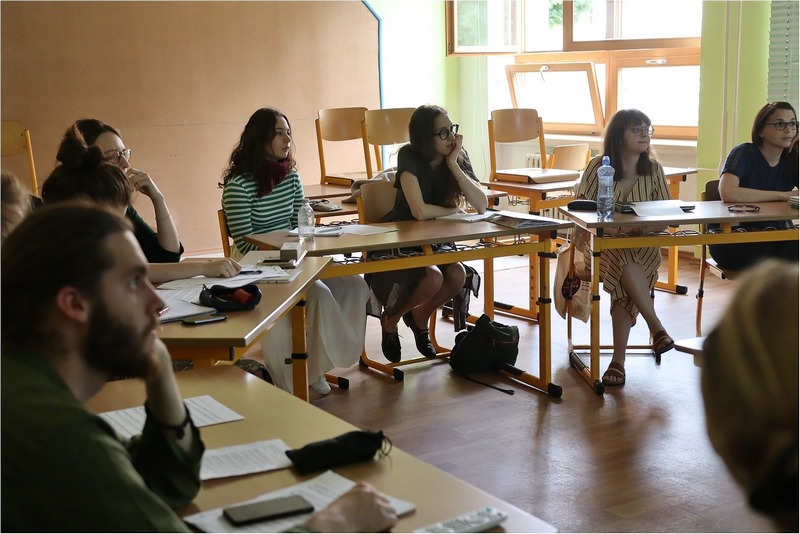 Na projektu Sound Memories spolupracovali muzikologové z pražské Univerzity Karlovy s kolegy z Varšavy, Curychu, Utrechtu a Cambridge s řadou partnerů, hlavně výkonných hudebníků. Průběžně prezentovali své výsledky formou pohostinských přednášek, konferencí, publikací a koncertů. Výsledky celého tříletého bádání shrnuli na závěrečné konferenci všech projektů HERA v Gdaňsku, která se konala v září 2019 a také ve společné knize Resounding Past. Music as History and Memory připravované pro vydavatelství Brepols. Lenka Hlávková, vedoucí pražského badatelského týmu, vidí hlavní přínos v tom, že se projekt pokusil najít jiný klíč k pochopení hudebně-historických jevů, než je ten, který již od 19. století sleduje hlavně velké skladatele, významná hudební centra nebo nové způsoby kompozice a který stále převažuje při psaní dějin evropské hudby. Tento přístup zároveň reflektuje pouze jakousi špičku ledovce, neboť hudební kultura byla vždy mnohem rozmanitější, zahrnovala nejrůznější vrstvy tvořivosti a jedním z důležitých principů (přítomných dodnes) bylo vědomé vztahování se k minulosti v podobě uchovávání tradice.
Na projektu Sound Memories spolupracovali muzikologové z pražské Univerzity Karlovy s kolegy z Varšavy, Curychu, Utrechtu a Cambridge s řadou partnerů, hlavně výkonných hudebníků. Průběžně prezentovali své výsledky formou pohostinských přednášek, konferencí, publikací a koncertů. Výsledky celého tříletého bádání shrnuli na závěrečné konferenci všech projektů HERA v Gdaňsku, která se konala v září 2019 a také ve společné knize Resounding Past. Music as History and Memory připravované pro vydavatelství Brepols. Lenka Hlávková, vedoucí pražského badatelského týmu, vidí hlavní přínos v tom, že se projekt pokusil najít jiný klíč k pochopení hudebně-historických jevů, než je ten, který již od 19. století sleduje hlavně velké skladatele, významná hudební centra nebo nové způsoby kompozice a který stále převažuje při psaní dějin evropské hudby. Tento přístup zároveň reflektuje pouze jakousi špičku ledovce, neboť hudební kultura byla vždy mnohem rozmanitější, zahrnovala nejrůznější vrstvy tvořivosti a jedním z důležitých principů (přítomných dodnes) bylo vědomé vztahování se k minulosti v podobě uchovávání tradice.
Vystoupit ze své bubliny
Nezanedbatelnou stránkou všech výzkumných projektů, které podpořila „mateřská“ organizace HERA, je způsob prezentace. Dnes už nestačí napsat odbornou studii do sborníku a přednášet v okruhu stejně zainteresovaných lidí. Důležité je naučit se prezentovat své výsledky navenek, jazykem, kterému rozumí široká veřejnost. Vzhledem k úzce specializovaným tématům je to nesmírně obtížné, ale pokud se to nenaučíme, budou hudební a jiní humanitní vědci považováni za podivíny a jejich práce nebude nikoho zajímat. Dílčí projekty Sound Memories v Praze – dva koncerty soudobé hudby, ukázaly, že středověké kompoziční principy mohou být živou inspirací i pro současné skladatele. Zvuková paměť je totiž hluboko v každém z nás.
[block background=“#e5e5e5″]Tento seriál vzniká v rámci evropského projektu HERA Sound Memories: The Musical Past in Late-Medieval and Early-Modern Europe, který řeší mezinárodní tým muzikologů pod vedením Prof. Karla Kügleho (Utrecht) v pěti akademických institucích (Univerzita Utrecht, Univerzita Cambridge, Univerzita Curych, Univerzita Karlova Praha, Polská akademie věd Varšava).
Dita Hradecká absolvovala hudební vědu na FF UK a jako publicistka (Lidové noviny, Český rozhlas Vltava, Harmonie, Czech Music, Aktualne.cz aj.) se věnuje hudebnímu životu u nás a v zahraničí.
Více informací (včetně audio- a videozáznamů) najdete na webových stránkách projektu Sound Memories.[/block]
Vážení čtenáři, vzhledem k mezinárodnímu složení badatelského týmu mimořádně uveřejňujeme českou i anglickou variantu textu.
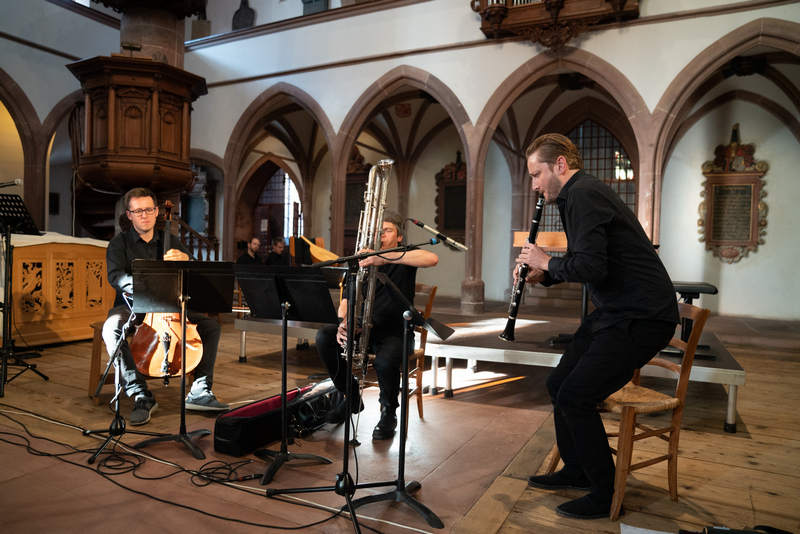
Memory and Tradition within the European Music Culture of the Late Middle Ages and the Early Modern Times
In the academic world, big things can happen in relatively small fields—it’s just a matter of getting the word out.
This series, in which texts by leading European music historians and their doctoral students offer Harmonie readers the chance to peek into the corners of medieval and early-modern culture, has been part of the outreach of the wide-branching project Sound Memories: The Musical Past in Late-Medieval and Early-Modern Europe. The project is supported by the European organization HERA (Humanities in the European Research Area), which has dispensed funding for humanities research since 2006. Its motto is simple: “Humanities matter”—a phrase that bears repeating, and emphasizing, again and again.
It might seem that in our time of impending climate catastrophe, economic and social crises, and miserable politics, there could be nothing more pointless than examining medieval manuscripts and hunting down reasons why their authors included this or that composition. After all, we live in the twenty-first century; we enjoy the achievements of advanced civilization, and the age of fatwood lighters, parchment, and dimly lit monastic cells is long past. It doesn’t take much, however, to show how much the past truly means for us and what really forms the essence of our identity.
When a cathedral burns
On 15 April 2019 a fire broke out in the cathedral of Notre Dame in Paris. The image of the iconic Gothic building in flames, enough to call forth sensations of physical pain, and the feeling that something so shocking as to be fatal had happened, struck literally the whole world. The vast majority of people realized—without necessarily reflecting or formulating—that this wasn’t just about the destruction of one specific (albeit significant) architectural monument. In the cathedral of Notre Dame (and here, please note, I am not veering into esotericism or speaking of the energies left there by generations of believers, nor yet of the mysterious rites of Freemasons) was preserved the kernel of something substantively written into our DNA. ‘I hate the sight of burning cathedrals, because for me they embody Europe. After them will follow galleries and pretty much everything else there is here, including nature. We are a ‘museum continent’, reworked and adapted by humans across the centuries. Today, its main item in Paris has disappeared, which can be variously interpreted and understood—including as a call to a new beginning, which (and this can never be ruled out) can bring something better than what was there before.’ These words were the reaction of the writer Pavel Kosatík.
 A cathedral isn’t just skilfully worked and artfully erected stone: it is a living organism, and music is, to a great extent, part of what creates it. And now, by way of a detour, we can come to the intended subject of this article: in the November 2018 issue of Harmonie, we read a wonderful text by Adam Mathias of Cambridge, who is dedicated to the study of music right in the cathedral of Notre Dame at the time of its flowering in the thirteenth century. Along with the university, at that time the cathedral of Paris became a magnet for all those hungry for knowledge. ‚Attitudes towards musical history also shifted significantly in this Parisian context. In this unique cultural situation, perceptions of the musical past became crucial not only in transforming documentary practices that preserve this repertory, but they also influenced the aesthetic values that informed the creation of new music. This new historical outlook fostered the wide dissemination of musical practices outside of Paris, new forms of music writing, and a historical consciousness about musical styles in ways qualitatively distinct from previous centuries.’ In other words, the past influenced the aesthetic criteria for the composition of the music of the future, and the environment of the Paris cathedral radiated this new music into farther lands.
A cathedral isn’t just skilfully worked and artfully erected stone: it is a living organism, and music is, to a great extent, part of what creates it. And now, by way of a detour, we can come to the intended subject of this article: in the November 2018 issue of Harmonie, we read a wonderful text by Adam Mathias of Cambridge, who is dedicated to the study of music right in the cathedral of Notre Dame at the time of its flowering in the thirteenth century. Along with the university, at that time the cathedral of Paris became a magnet for all those hungry for knowledge. ‚Attitudes towards musical history also shifted significantly in this Parisian context. In this unique cultural situation, perceptions of the musical past became crucial not only in transforming documentary practices that preserve this repertory, but they also influenced the aesthetic values that informed the creation of new music. This new historical outlook fostered the wide dissemination of musical practices outside of Paris, new forms of music writing, and a historical consciousness about musical styles in ways qualitatively distinct from previous centuries.’ In other words, the past influenced the aesthetic criteria for the composition of the music of the future, and the environment of the Paris cathedral radiated this new music into farther lands.
To the Middle Ages with new questions
This is only one example of relating to the music of the past in a novel way. It may seem that there’s not all that much left for research in medieval music and that much of it has already been thoroughly studied. Sources that were once available only in scattered and sometimes hard-to-access places are now neatly gathered and digitized, and we can page through illuminated manuscripts from the comfort of home. Computers can evaluate the similarity of melodies of different provenances. Forensic methods can locate the pasturing grounds of the sheep whose skin was used for parchment and determine the age of the ink used on it. With all that, have we gotten any closer to the past? Not quite. What’s still missing is the human element, the researcher, who can reveal the context, start posing new questions, and shed light on the facts in a new way.
 On the project Sound Memories, musicologists from Prague’s Charles University worked together with colleagues from Warsaw, Zurich, Utrecht, and Cambridge and a range of partners, primarily musical performers. Throughout the project, they presented their findings in the form of lectures, conferences, publications, and concerts. The results of the whole three years of research will be summarized in a book, Resounding Past: Music as History and Memory, prepared for the publisher Brepols, and at the final conference of all HERA projects in Gdansk this September. Lenka Hlávková, the leader of the Prague research team, sees the main benefit in the project’s attempt to find a different key to understanding musical-historical phenomena than the one that has been utilized from the nineteenth century onward, which mainly focuses on great composers, significant musical centers, or compositional innovations, and still predominates in the writing of European musical history. This approach really only reflects the toip of the iceberg, because musical culture has always been much more diverse, encompassing all sorts of layers of creativity, and one of its great principles has been a conscious relationship with the past through the preservation of tradition.
On the project Sound Memories, musicologists from Prague’s Charles University worked together with colleagues from Warsaw, Zurich, Utrecht, and Cambridge and a range of partners, primarily musical performers. Throughout the project, they presented their findings in the form of lectures, conferences, publications, and concerts. The results of the whole three years of research will be summarized in a book, Resounding Past: Music as History and Memory, prepared for the publisher Brepols, and at the final conference of all HERA projects in Gdansk this September. Lenka Hlávková, the leader of the Prague research team, sees the main benefit in the project’s attempt to find a different key to understanding musical-historical phenomena than the one that has been utilized from the nineteenth century onward, which mainly focuses on great composers, significant musical centers, or compositional innovations, and still predominates in the writing of European musical history. This approach really only reflects the toip of the iceberg, because musical culture has always been much more diverse, encompassing all sorts of layers of creativity, and one of its great principles has been a conscious relationship with the past through the preservation of tradition.
Stepping out of the bubble
An indispensable part of all the research projects supported by the “mother” organization HERA is the mode of presentation. Today it is no longer enough to write a scholarly study for an anthology and give a lecture for a circle of people with similar interests. It’s important to learn how to present one’s findings externally, in language comprehensible to the general public. Given our narrowly specialized topics, this can be extremely tricky, but if we don’t learn to do this, musicologists and other humanities scholars will be passed over as eccentrics and their work will be of interest to no one. The constituent projects of Sound Memories specific to Prague, two concerts of contemporary music, showed that medieval compositional principles can also be living inspiration for contemporary composers. Sound memory, in fact, is deeply ingrained in all of us.
[block background=“#e5e5e5″]This series has been published as part of the European project HERA Sound Memories: The Musical Past in Late Medieval and Early Modern Europe, undertaken by an international team of musicologists led by Prof. Karl Kügle (Utrecht) in five academic institutions (Utrecht University, the University of Cambridge, the University of Zurich, the Charles University in Prague, and the Polish Academy of Sciences in Warsaw).
Dita Hradecká studied musicology at the Faculty of Arts of the Charles University and is dedicated to musical life at home and abroad as a publicist (Lidové noviny, Český rozhlas Vltava, Harmonie, Czech Music, Aktualne.cz and others).
More information (including audio and video recordings) see on Sound Memories project website.[/block]
This project has received funding from the H2020-EU.3.6 – SOCIETAL CHALLENGES – Europe in a Changing World – Inclusive, Innovative and Reflective Societies under grant agreement no. 649307. The project Sound Memories: The Musical Past in Late-Medieval and Early-Modern Europe is financially supported by the HERA Joint Research Programme (www.heranet.info) which is co-funded by AHRC, AKA, PT-DLR, CAS, CNR, DASTI, ETAG, FCT, FNR, F.R.S.-FNRS, FWF, FWO, HAZU, IRC, LMT, MIZS, MINECO, NCN, NOW, RANNÍS, RCN, SNF, VIAA, VR and The European Community, SOCIETAL CHALLENGES – Europe in a Changing World – Inclusive, Innovative and Reflective Societies under grant agreement no. 649307.
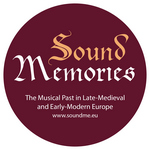 |
 |
 |
